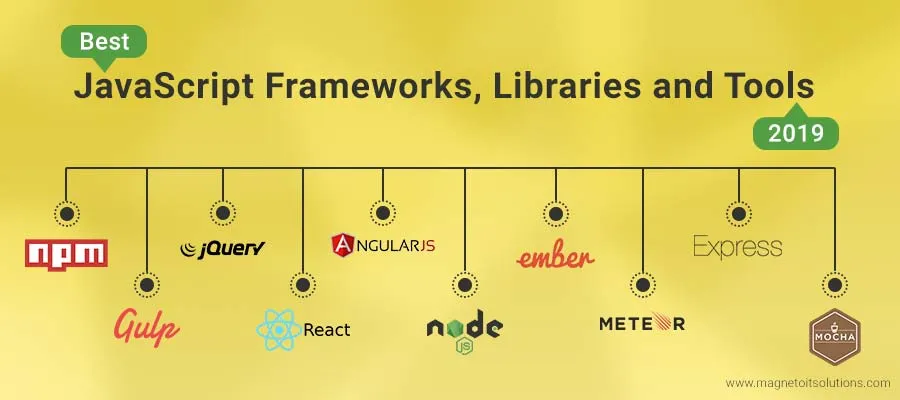The Power of JavaScript Why You Should Learn It
In the ever-evolving world of technology, the ability to code has become increasingly valuable. Among the many programming languages available, JavaScript has emerged as a true powerhouse, offering a vast array of possibilities for developers, web designers, and even aspiring coders. If you’re wondering why you should invest your time and effort into learning JavaScript, this article is here to provide you with the answers.
The Fundamentals of JavaScript

JavaScript is a high-level, interpreted programming language that is primarily used for web development and interactive web applications. It was initially created in the early 1990s to enhance the functionality of web pages, and since then, it has evolved into a versatile language that can be utilized in various contexts, including server-side scripting, mobile app development, and even game development.
The Origins and Evolution of JavaScript
JavaScript was first introduced in 1995 by Brendan Eich, a developer at Netscape Communications Corporation. Initially, it was named Mocha, but it was later renamed to LiveScript and then finally to JavaScript. Despite the similarities in name, JavaScript is not related to Java, which is a separate programming language.
The early days of JavaScript were marked by a lack of standardization, leading to compatibility issues between different web browsers. This problem was addressed in 1997 when the first version of the ECMAScript standard was introduced. ECMAScript is the standardized version of JavaScript, and it has continued to evolve over the years, with the most recent version being ECMAScript 2021 (ES2021).
The Versatility of JavaScript
One of the key reasons why JavaScript has become so popular is its versatility. While it was initially designed for web development, it has since expanded its reach to various other domains. Here are some of the areas where JavaScript is widely used:
- Web Development: JavaScript is the primary language for building interactive and dynamic web pages. It is used to add interactivity, animations, and special effects to web pages, as well as to handle user interactions and data processing.
- Single-Page Applications (SPAs): JavaScript, combined with frameworks and libraries like React, Angular, and Vue.js, has become essential for building modern, fast, and responsive single-page applications.
- Server-Side Scripting: With the introduction of Node.js, developers can now use JavaScript for server-side programming, enabling the creation of APIs, handling HTTP requests, and managing database operations.
- Mobile Development: With the rise of technologies like React Native and NativeScript, JavaScript can now be used to build mobile apps for both iOS and Android platforms.
- Game Development: JavaScript can also be used to create simple browser-based games, thanks to libraries like Phaser and PixiJS.
- Desktop Applications: The increased popularity of Electron has allowed developers to build desktop applications using JavaScript, HTML, and CSS, making it possible to create cross-platform programs that still integrate with the native operating system.
The Advantages of Learning JavaScript
Learning JavaScript offers numerous benefits for both aspiring and experienced developers. Here are some of the key advantages:
- Widespread Adoption: JavaScript is one of the most widely used programming languages in the world, with a large and active community of developers. This means that there is a vast amount of resources, libraries, and tools available, making it easier to find solutions to your problems.
- Versatility: As mentioned earlier, JavaScript’s versatility allows you to use it in a wide range of applications, from web development to mobile apps and even desktop software. This flexibility makes it an invaluable skill to have in your toolbox.
- Interoperability: JavaScript is a client-side language, which means that it can be executed directly in web browsers. This interoperability with web browsers makes it a crucial language for web development, as it allows you to create highly interactive and engaging user experiences.
- Career Opportunities: Due to the high demand for JavaScript developers, learning this language can significantly improve your career prospects. Many companies are actively seeking developers with JavaScript skills, and the job market for JavaScript-proficient professionals is thriving.
- Transferable Skills: The skills you acquire while learning JavaScript can be easily applied to other programming languages. Many of the fundamental programming concepts, such as data structures, algorithms, and problem-solving, are universal and can be transferred to other languages.
The Core Concepts of JavaScript
To truly master JavaScript, it’s essential to have a solid understanding of its core concepts. In this section, we’ll dive into the fundamental building blocks of the language, providing you with a strong foundation for your learning journey.
Variables and Data Types
Variables are the basic building blocks of any programming language, and JavaScript is no exception. In JavaScript, you can declare variables using the
keywords, each with its own unique characteristics and use cases.
Data types in JavaScript can be divided into two main categories: primitive data types and non-primitive data types. Primitive data types include numbers, strings, booleans, null, undefined, and symbols, while non-primitive data types include objects and arrays.
Understanding how to declare and work with variables, as well as the different data types in JavaScript, is crucial for writing effective and efficient code.
Operators and Expressions
Operators in JavaScript are symbols that perform specific operations on one or more operands. These operators can be used to perform arithmetic, assignment, comparison, logical, and other types of operations. Understanding how to use these operators effectively is essential for writing complex and functional code.
Expressions in JavaScript are combinations of values, variables, operators, and function calls that evaluate to a single value. Mastering the use of expressions can help you write more concise and readable code.
Control Flow and Conditional Statements
Control flow in JavaScript refers to the order in which the computer executes code statements. Conditional statements, such as
, and ternary operators, play a crucial role in controlling the flow of execution based on specific conditions.
Mastering control flow and conditional statements will enable you to write more dynamic and responsive applications that can adapt to different scenarios and user inputs.
Functions and Scope
Functions in JavaScript are reusable blocks of code that can accept input parameters, perform specific tasks, and return values. Understanding how to define, call, and work with functions is essential for writing modular and organized code.
Scope in JavaScript refers to the accessibility of variables and functions within different parts of the code. Mastering scope is important for avoiding naming conflicts and ensuring that your code behaves as expected.
Arrays and Objects
Arrays and objects are two of the most fundamental data structures in JavaScript. Arrays are used to store collections of values, while objects are used to store key-value pairs. Mastering the manipulation and usage of arrays and objects is crucial for building complex data-driven applications.
Asynchronous Programming
Asynchronous programming in JavaScript is a crucial concept that allows your code to execute tasks without blocking the main execution thread. This is particularly important for web development, where you need to handle user interactions, network requests, and other time-consuming operations without freezing the user interface.
Understanding asynchronous programming techniques, such as callbacks, promises, and async/await, will enable you to write more responsive and efficient applications.
JavaScript Frameworks and Libraries

While JavaScript’s core concepts provide a solid foundation, the language has evolved to include a vast ecosystem of frameworks and libraries that can significantly enhance your development experience and the capabilities of your applications.
Front-end Frameworks
Front-end frameworks like React, Angular, and Vue.js have become extremely popular in recent years, as they provide a structured and opinionated approach to building complex user interfaces. These frameworks often include features like virtual DOM, state management, and component-based architecture, which can improve the performance and maintainability of your web applications.
Back-end Frameworks
On the back-end side, Node.js has emerged as a powerful runtime environment that allows you to use JavaScript for server-side programming. This has led to the development of various back-end frameworks, such as Express.js, Koa.js, and Nest.js, which simplify the process of building APIs, handling HTTP requests, and managing database operations.
Utility Libraries
JavaScript also has a rich ecosystem of utility libraries that can help you with a wide range of tasks, from data manipulation and manipulation to UI components and animations. Some popular utility libraries include Lodash, Moment.js, and D3.js.
Testing Frameworks
Ensuring the quality and reliability of your JavaScript applications is crucial, and testing frameworks like Jest, Mocha, and Cypress can help you achieve this. These frameworks provide tools for writing and running automated tests, allowing you to catch bugs early in the development process.
Deployment and Tooling
Finally, the JavaScript ecosystem has also produced a range of tools and technologies that can streamline the deployment and development process. Tools like Webpack, Gulp, and Babel can help you with tasks like bundling, transpiling, and automating your development workflow.
The Future of JavaScript

As JavaScript continues to evolve and expand its reach, it’s essential to stay informed about the latest trends and advancements in the language and its ecosystem.
Emerging Trends
Some of the emerging trends in the JavaScript landscape include the rise of WebAssembly, which aims to bring high-performance, low-level programming to the web; the increasing popularity of TypeScript, a superset of JavaScript that adds static typing; and the growing adoption of serverless computing and cloud functions, which allow developers to deploy JavaScript code without managing the underlying infrastructure.
Ongoing Improvements
The ECMAScript committee is constantly working on improving the language, with new features and enhancements being introduced with each annual release. These improvements often focus on improving the developer experience, enhancing performance, and introducing new capabilities.
The Expanding Ecosystem
As the JavaScript ecosystem continues to grow, we can expect to see more specialized libraries, frameworks, and tools emerge to address specific development needs. This diversity and innovation will likely continue to drive the language’s widespread adoption and keep JavaScript at the forefront of web development.
Conclusion
In conclusion, learning JavaScript is a highly valuable investment for any aspiring or experienced developer. With its versatility, widespread adoption, and expanding ecosystem, JavaScript has become a cornerstone of modern web development and beyond.
By mastering the core concepts of JavaScript, familiarizing yourself with the various frameworks and libraries, and staying up-to-date with the latest trends, you can position yourself for success in the ever-evolving world of technology. So why not take the first step and start your journey with JavaScript today? The possibilities are endless, and the rewards are well worth the effort.